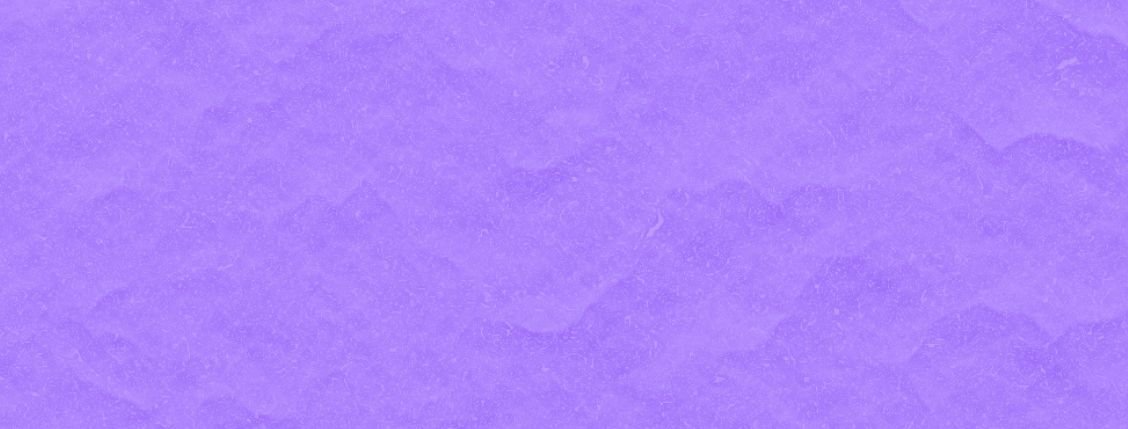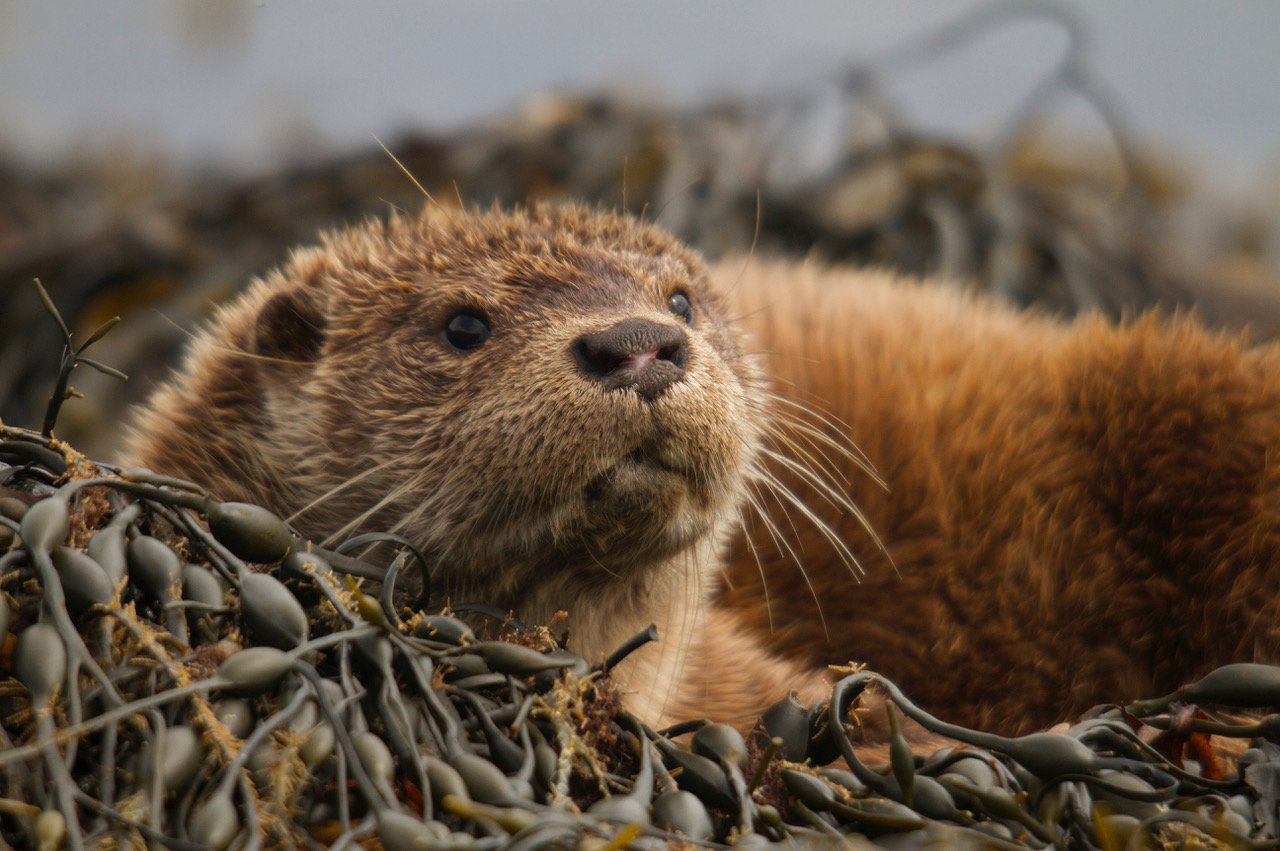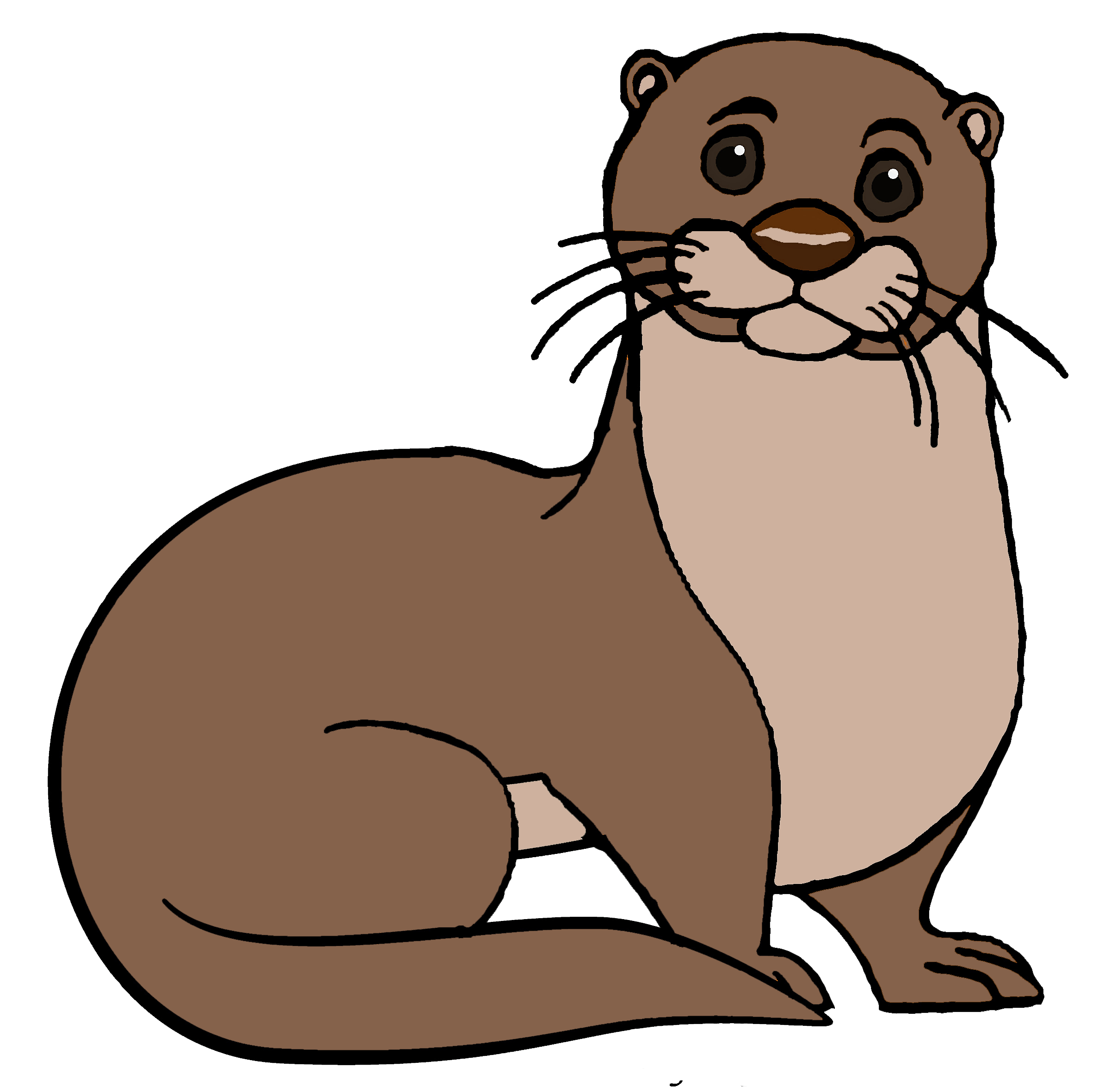
What are otters?
©Jim Manthorpe
Otters are Mammals.
Which means:
1. They have fur or hair
2. They do not lay eggs. Mammals give birth to live young!
3. They feed their babies milk
4. They have warm blood.
Otters are from a group of mammals called the Mustelids, so are related to…
Badgers
Pine martens
Weasels

Be an Otter Spotter
Otters are really shy so are hard to find. So, what are you looking out for?
The Tail - the last thing you will see when an otter goes underwater is a tail!
The Pop - when they return from underwater they often ‘pop’ out of the water!
The Squeak - when otters are together they often may a sharp ‘peeping’ noise. And can also ‘chatter’ to one another!
The Colour - mostly brown, often with lighter throats. Watch as they camouflage into seaweed!
You may need some practice before you go and find them in the wild… try our otter spotter game in the fun and games section!
Finding otter signs
-

Spraint
Spraint is the fancy name for otter droppings. It is often dark grey/grey in colour and contain what they eat - most likely fish bones and crabs shells. You will find spraint near freshwater pools, holts, trails and around slightly raised areas to helps otters mark their territory.
-

Footprints
Otter footprints have five toes and webbing. Many other species such as cats, dogs and foxes only show four toes.
-

Otter trails
Can you see the tunnel showing where an otter has run through the long grass? Often when otters run through areas of thick vegetation or long grass, then can create tunnels. These are always marked with spraint.
-

Fresh water
Coastal otters need fresh water to help keep their fur in perfect condition by washing salt out of their fur. This can be rivers, or streams, but is often more stagnant pools near to the coast. Again, marked with spraint.
-

Holts
An otter’s den is called a holt. This can be in a number of places such as under rocks, burrows or around tree trunks. It is really important that if you think you have found a holt, that you leave it alone! Holts are protected so that otters are not disturbed when they try to rest!
Fun, Games and Resources
Visit IOSF’s Fun, Games and Resources page to learn lots of cool ideas of what you can do to learn more about otters - and how to help them!
Your Page
Visit “Your Page” for all the children’s artwork, poems, stories, photographs and much more from around the world.
Send your amazing creations and pictures to IOSF for a chance to have it put on the website
©Molly Simko
Why help otters? What makes otters special?
It is important to protect all wildlife, and help them become survive for a long-time around the world. But why otters?
Firstly, and most simply, because we love otters, we enjoy watching them and having them around. We should always do our utmost to help everything we can!
Otters are what is known as semi-aquatic which basically means they live on land, and in water. This means they need a relatively healthy environment in both, so by having healthy otter populations, it means that your environment is okay.
Otters are at the top of the food chain, and maintain a balanced-healthy ecosystem. If you lose otters, you lose that balance, which effects all species, including our own! It also means, that any toxins/pollution in the food chain, will always end up in otters!
Otters indicate a healthy environment - and that is something we all want!
©Pablo Necochea B
























